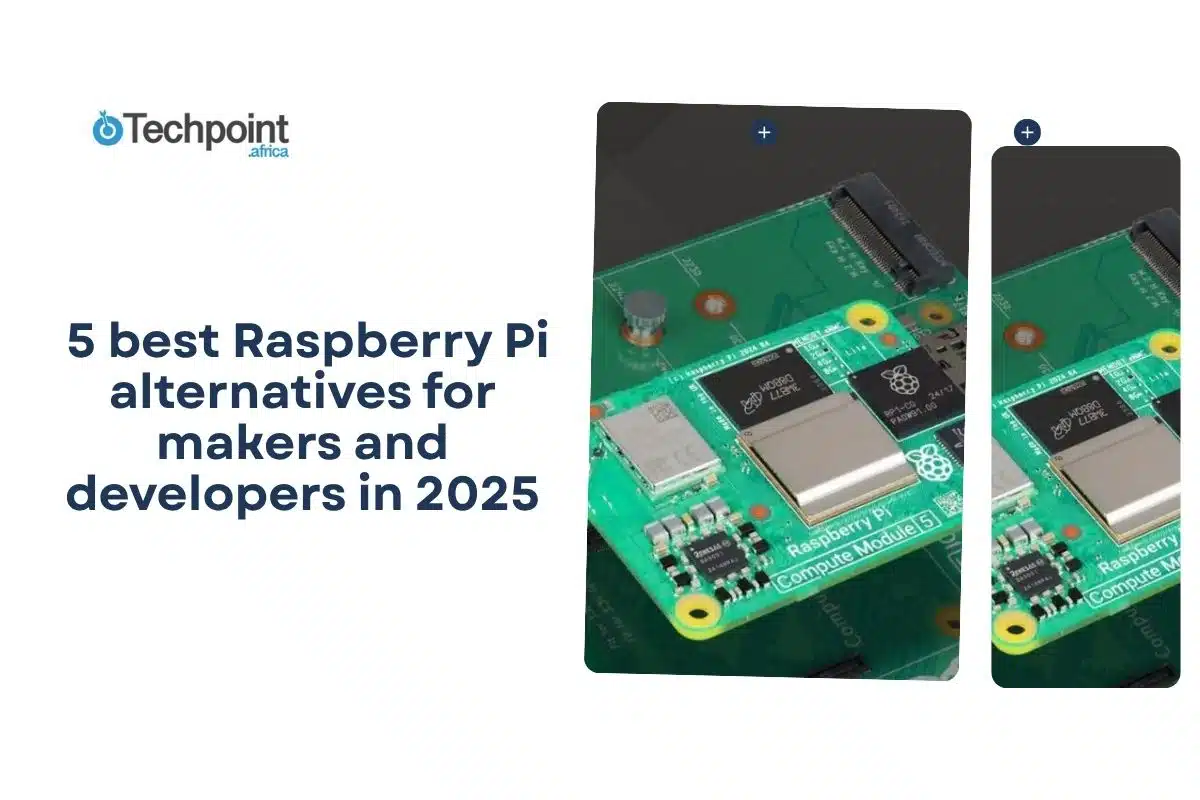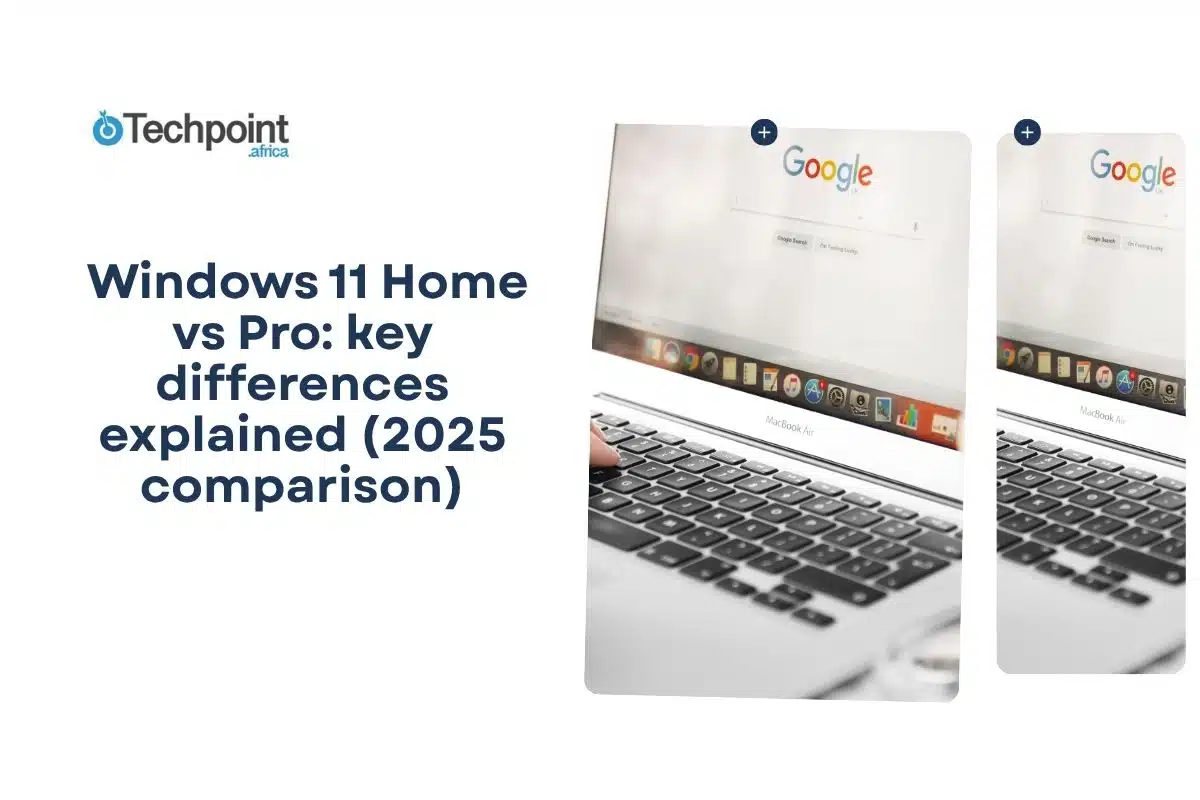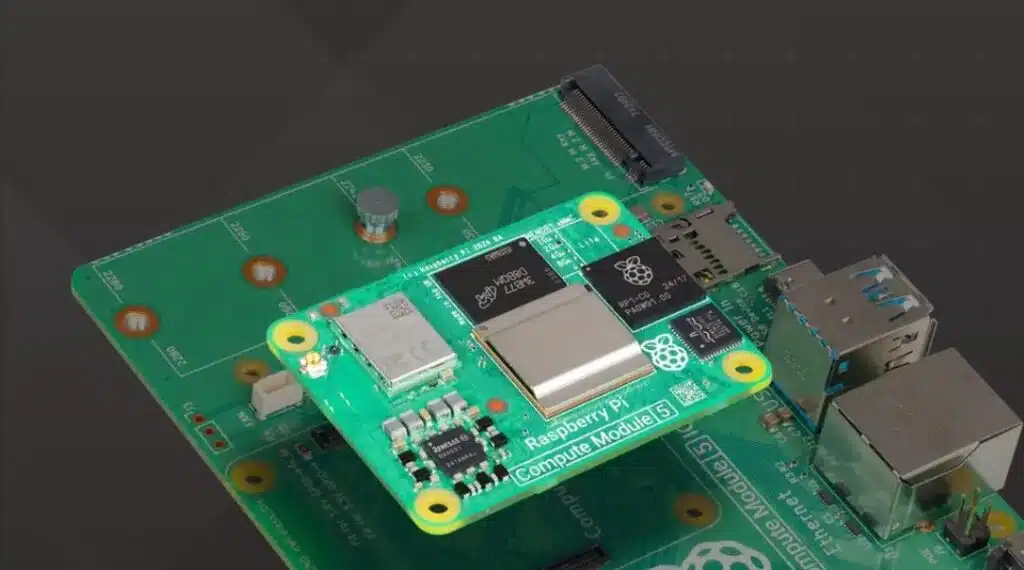
Raspberry Pi has become the go-to board for makers, but it isn’t always the best answer.
Sometimes projects demand more speed, more memory, or stronger media and AI support. That’s where the best Pi alternatives come in, offering extra power, storage flexibility, and smoother performance.
In this guide, you’ll learn:
- Which five Raspberry Pi alternatives are worth your attention in 2025?
- How each board compares in terms of performance, price, and community support.
- Which options are best suited for specific projects, such as AI, media playback, or desktop workloads?
- The pros and cons of each choice so you can make an informed decision.
- FAQs and tips to help you select the board that best suits your project.
The 5 best Raspberry Pi alternatives
- Orange Pi 5 Plus
- Libre Sweet Potato (AML-S905X-CC)
- ASUS Tinker Board 2S
- ODROID N2+
- Udoo Bolt V8
An overview of the 5 best Raspberry Pi alternatives
| Board | CPU | GPU / NPU | RAM | Storage | Video | Networking | Ports | Amazon / Typical Price | Amazon Rating | Best For |
| Orange Pi 5 Plus | Rockchip RK3588 (8-core: 4×A76 + 4×A55) up to 2.4 GHz | Mali-G610 + NPU (~6 TOPS) | 4GB / 8GB / 16GB LPDDR4/4x | eMMC, M.2 NVMe (varies) | 8K decode/encode, HDMI | 2.5G Ethernet | USB-C, HDMI, 40-pin GPIO | ₦186,785.78 – ₦257,387.54 (≈ $200–270) | ⭐ 4.3 | Media projects & edge AI |
| Libre Sweet Potato (AML-S905X-CC) | Amlogic S905X (quad Cortex-A53) | Mali-450 | 2GB | microSD, optional eMMC | 4K decode | 100 Mbps Ethernet | USB, 40-pin GPIO, USB-C (some versions) | ₦58,834.80 – ₦73,543.50 (≈ $45–60) | ⭐ 4.3 | Budget builds & media playback |
| ASUS Tinker Board 2S | Rockchip RK3399 (2×A72 + 4×A53) | Mali-T860 | 2GB / 4GB LPDDR4 | 16GB eMMC + microSD | 4K60, HDMI + USB-C DP | Gigabit Ethernet, Wi-Fi/Bluetooth | USB 3.0, USB-C, 40-pin GPIO, CSI/DSI | $130–170 | ⭐ 3.6 | Hobbyists needing polish |
| ODROID N2+ | Amlogic S922X (4×A73 + 2×A53) ~2.2–2.4 GHz | Mali-G52 | 2GB / 4GB DDR4 | eMMC + microSD | 4K HDMI 2.1 | Gigabit Ethernet | 4× USB 3.0, HDMI, GPIO | $66–90 | N/A | Raw CPU power in SBC |
| Udoo Bolt V8 | AMD Ryzen Embedded V1605B (4c/8t) | Radeon Vega 8 | Up to 32GB DDR4 (SO-DIMM) | M.2 NVMe, some eMMC SKUs | Multi-display, desktop-grade | Gigabit Ethernet, Wi-Fi (varies) | USB 3.x, PCIe lanes | $452 (Shopseco.com) | N/A | Desktop-class performance |
How we chose these Raspberry Pi alternatives
Each board here was evaluated against practical criteria that makers and developers actually care about:
- Performance that matches the use case — CPU architecture, GPU capability, RAM capacity, and multimedia handling.
- Storage and connectivity — support for eMMC, M.2, or microSD; USB speeds; and GPIO pin compatibility.
- Software ecosystem — availability of Debian/Ubuntu builds, driver stability, and the strength of community documentation.
- Pricing and accessibility — realistic street prices and whether you can easily buy the board in common markets.
- Thermals and power profile — whether it runs cool under sustained workloads or requires active cooling.
Each alternative you’ll read about below is either widely tested in the field or well-documented by the maker community. And when a feature has limitations, such as incomplete drivers or limited OS support, we clearly indicate this so you can make an informed decision.
Raspberry Pi 5 best alternatives in-depth review
1) Orange Pi 5 Plus — best for media projects and edge AI
Amazon rating 4.3
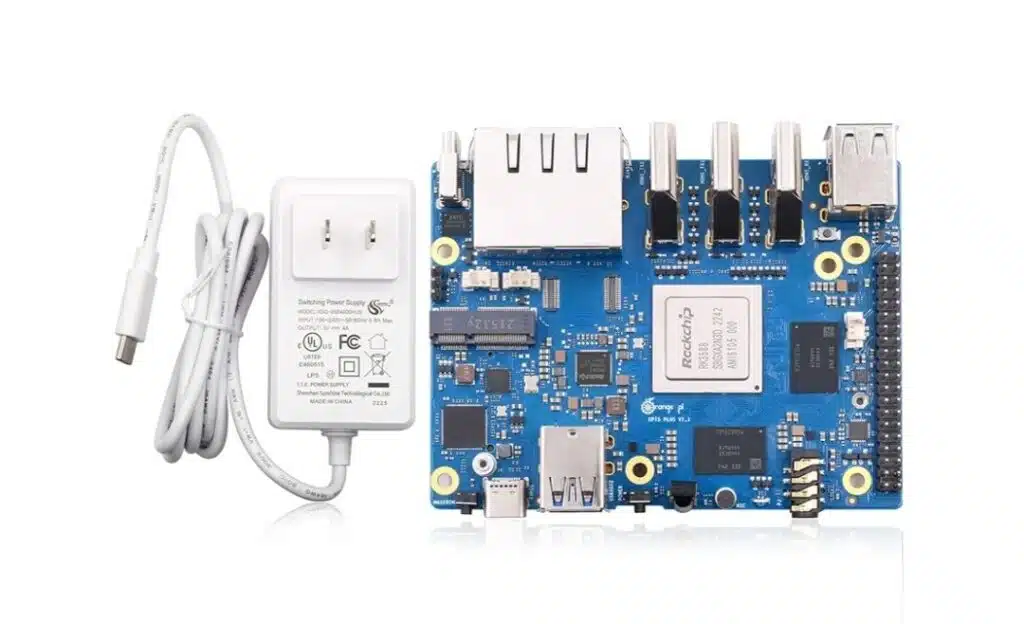
| Item | Details |
| CPU | Rockchip RK3588, 8-core (4× Cortex-A76 + 4× Cortex-A55) up to 2.4 GHz |
| NPU | Integrated NPU, up to ~6 TOPS (INT8/FP16) |
| GPU | ARM Mali-G610 |
| RAM | 4GB / 8GB / 16GB LPDDR4/LPDDR4x |
| Storage | eMMC socket; M.2 (device variants may include NVMe) |
| Video | Up to 8K video decode/encode, HDMI output |
| Networking | 2.5G Ethernet (depending on variant) |
| Ports | USB (including USB-C), HDMI, 40-pin GPIO |
| Amazon prices in Naira | 16GP: ₦ 257,387.548GP: ₦ 257,387.544GP: ₦ 186,785.78 |
Why you’d pick it
The Orange Pi 5 Plus features a Rockchip RK3588 processor with four Cortex-A76 and four Cortex-A55 cores, an ARM Mali-G610 GPU, and an integrated NPU rated at around 6 TOPS, enabling it to handle local inference and heavy media processing.
You can equip it with 4, 8, or 16 GB of LPDDR4 memory and use eMMC or M.2 NVMe storage for significantly improved responsiveness compared to microSD. The board supports high-resolution video pipelines up to 8K and offers 2.5G Ethernet on some variants, which helps when streaming or transcoding large files over the LAN.
Migration tips
Start by downloading a Linux image designed explicitly for the RK3588, rather than attempting to reuse a Raspberry Pi image. If your current Pi project relies on fast I/O, consider migrating the OS to eMMC or an NVMe drive, as microSD performance may feel sluggish. Verify GPIO pin mappings and test camera or display drivers early, as device-specific drivers may require recompilation.
Pros
- Excellent CPU and NPU for edge AI and media applications.
- Extensive RAM options and NVMe support for responsive storage.
Cons
- Smaller community and fewer Pi-style accessories.
- Driver and image maturity can lag behind Raspberry Pi vendors.
2) Libre Sweet Potato (AML-S905X-CC) — best for budget projects and media playback
Amazon rating 4.3
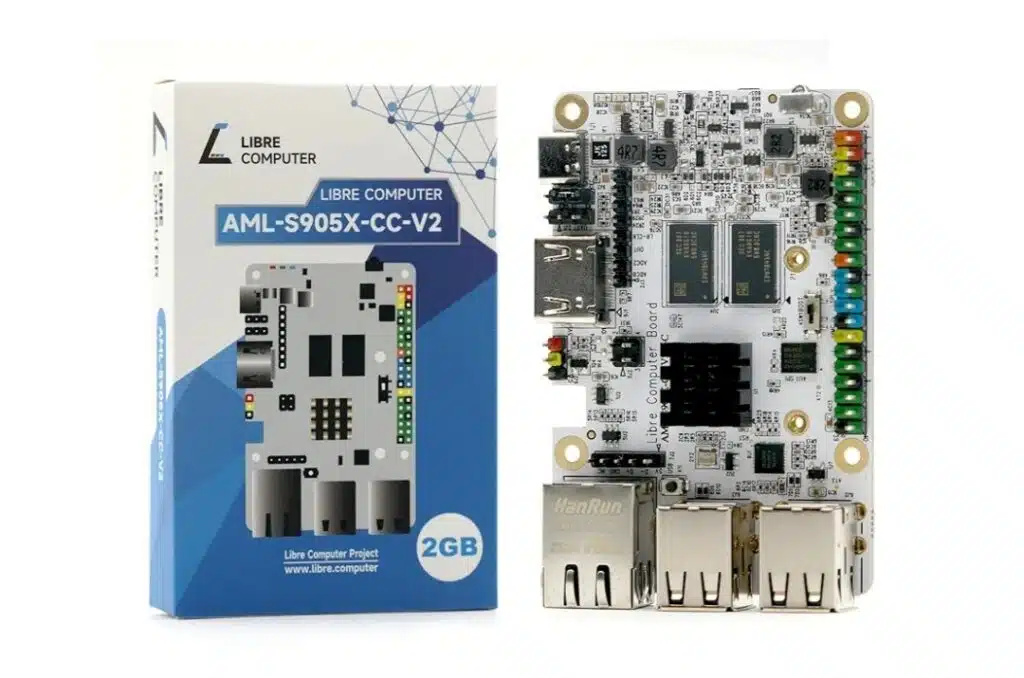
| Item | Details |
| CPU | Amlogic S905X (quad-core Cortex-A53) |
| GPU | ARM Mali-450 |
| RAM | 2GB (typical model) |
| Storage | microSD slot; optional eMMC variants |
| Video | 4K decode support, suitable for media center builds |
| Networking | 100 Mbps Ethernet (Fast Ethernet) |
| Ports | USB, 40-pin GPIO, USB-C on some revisions |
| Amazon prices in Naira | Board: ₦58,834.80Board+ PoE: ₦73,543.50 |
Why you’d pick it
It feels familiar if you’ve worked with a Pi, and you don’t lose the essentials like GPIO access and USB ports. You won’t get gigabit Ethernet or loads of RAM, but for experimenting, classrooms, or a cluster of low-cost boards, it’s a wise choice.
Migration tips
Use Libre Computer’s official images to ensure you receive tested kernels and documented drivers. Remember, network throughput is limited to 100 Mbps, so plan streaming or file transfers accordingly. Test simple GPIO scripts before migrating extensive HAT-based projects, as some libraries may require recompilation.
Pros
- Extremely low cost and sound 4K playback for media.
- Official images and documentation for quick setup.
Cons
- Only 2 GB RAM and Fast Ethernet limit multitasking and network throughput.
- Smaller ecosystem of accessories and fewer community tutorials than Raspberry Pi.
3) ASUS Tinker Board 2S — best for hobbyists who want a polished board and media performance
Amazon rating: 3.6
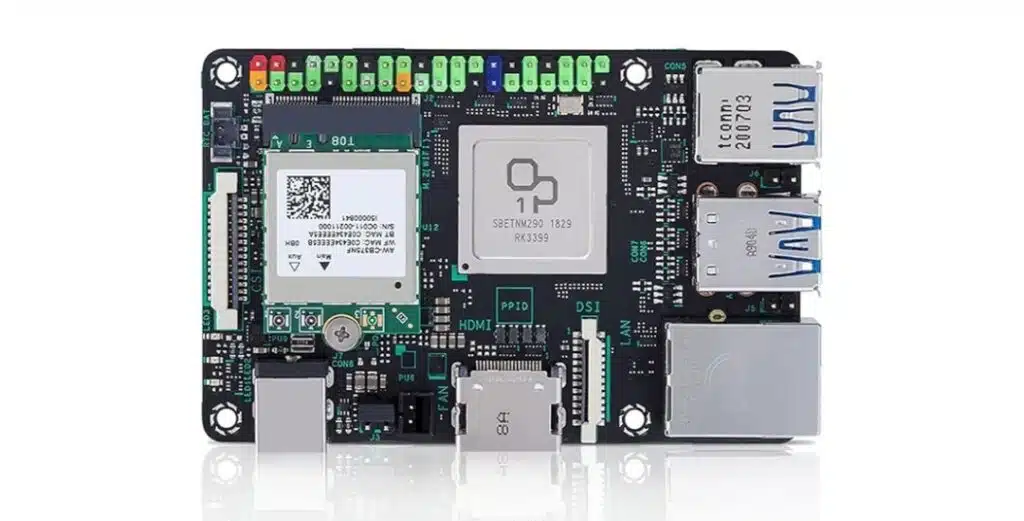
| Item | Details |
| CPU | Dual-core Arm® Cortex®-A72 @ 2.0 GHzQuad-core Arm® Cortex®-A53 @ 1.5 GHz |
| GPU | Arm® Mali™-T860 MP4 GPU @ 800 MHz |
| RAM | 2GB or 4GB LPDDR4 variants |
| Storage | 16GB eMMC (on 2S model) + microSD |
| Video | 4K60 support, HDMI, and USB-C display options |
| Networking | Gigabit Ethernet; Wi-Fi + Bluetooth on some SKUs |
| Ports | USB 3.0, USB-C (DP alt), 40-pin GPIO, CSI/DSI |
| Typical price | ~ $130–170 depending on RAM/eMMC variant |
Why you’d pick it
If you want something that feels refined out of the box, the ASUS Tinker Board 2S is built for you. It features 16GB of onboard eMMC, so you’re not limited to slow microSD cards, and the colour-coded GPIO makes wiring projects less prone to errors. You can output 4K60 video over HDMI or USB-C, offering flexibility for various display types. Working is reliable with gigabitEthernet and optional Wi-Fi/Bluetooth.
Migration tips
Choose ASUS’s official OS images or popular community builds to minimise driver problems. If you plan to move your Pi image, cloning it to the Tinker Board’s eMMC yields faster and more reliable boots than using a microSD card. Double-check pinouts and voltage expectations before attaching HATs or sensor shields to ensure compatibility.
Pros
- Polished hardware and eMMC for a better out-of-the-box experience.
- Good documentation and reliable media playback.
Cons
- A smaller software and accessory ecosystem than the Raspberry Pi.
- Slightly pricier than the lowest-cost alternatives.
4) ODROID N2+ — best for raw CPU power in an SBC form factor
Amazon rating: N/A
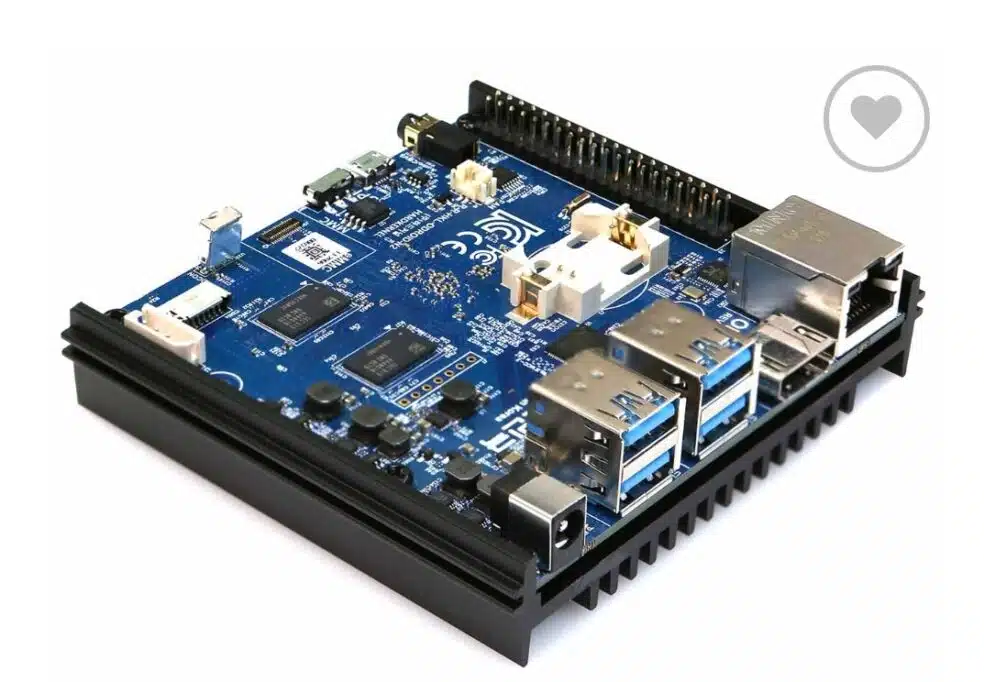
| Item | Details |
| CPU | Amlogic S922X: 4× Cortex-A73 + 2× Cortex-A53 (up to ~2.2–2.4 GHz) |
| GPU | Mali-G52 |
| RAM | 2GB or 4GB DDR4 options |
| Storage | eMMC socket + microSD |
| Video | 4K output via HDMI |
| Networking | Gigabit Ethernet |
| Ports | 4× USB 3.0, HDMI 2.1 (depending on revision), 40-pin GPIO |
| Typical Amazon price | 2GB model ≈ $66 (retailer pricing) |
Why you’d pick it
If you’ve ever hit the limits of a Raspberry Pi while compiling code, running Docker containers, or even emulating games, the ODROID N2+ is the upgrade you’ve been waiting for. Its Cortex-A73 cores clock up to 2.4GHz, so everyday tasks feel snappier and heavier projects bolt. Pair it with eMMC storage and gigabit Ethernet, and you’ve got a responsive board that can double as a mini server or a powerful dev box.
Migration tips
Start with Hardkernel’s official Ubuntu images for the best compatibility. Prefer eMMC modules for your system image to get consistent boot times and longer flash life. Verify HAT compatibility and test your GPIO scripts before moving a finished case or sensor array.
Pros
- Strong CPU performance per dollar and solid build quality.
- Fast eMMC booting and active community support.
Cons
- Limited maximum RAM compared with the highest-end ARM SBCs.
- Sustained heavy loads need deliberate cooling and a stable power supply.
5) Udoo Bolt V8 — best when you need desktop-class performance in a compact board
Amazon rating: N/A
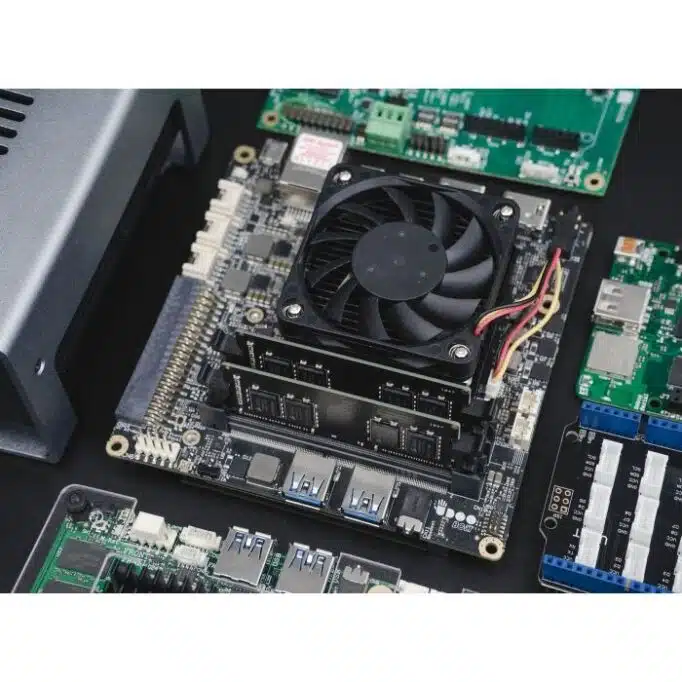
| Item | Details |
| CPU | AMD RYZEN Embedded V1605B Quad Core/Eight Thread @2GHZ (3.6 Boost) |
| GPU | AMD Radeon Vega 8 (integrated) |
| RAM | 2× SO-DIMM slots — up to 32GB DDR4 (dual-channel) |
| Storage | eMMC on some SKUs; M.2 NVMe on various kits |
| Video | Multiple display outputs; GPU capable of desktop workloads |
| Networking | Gigabit Ethernet; Wi-Fi depends on SKU |
| Ports | USB 3.x, PCIe lanes available on some carrier boards |
| Typical price | High-tier board; expect several hundred dollars (varies by config) Shopseco.com: $452.00Udoo.org: $ 459,00 |
Why you’d pick it
If you’ve ever wished your Pi could act like a real desktop, the Udoo Bolt V8 is that dream board. With an AMD Ryzen V1605B processor and Radeon Vega 8 graphics, you can run Windows or Linux exactly as you would on a laptop or PC. You can load it with up to 32GB of RAM, add NVMe storage, and even drive demanding apps like video editing, 3D prototyping, or AI training.
Migration tips
Migrate to x86 OS images, as ARM Raspberry Pi images are not compatible with this environment. Expect to install standard Ubuntu or Windows builds and adjust cooling settings. Active fans or large heatsinks are recommended for optimal performance. Inventory any ARM-only binaries or drivers and find x86 equivalents before committing to a complete migration..
Pros
- Native x86 performance and Vega GPU for desktop workloads.
- Extensive RAM and NVMe options let you treat the board like a compact workstation.
Cons
- Significantly more expensive and power hungry than ARM SBCs.
- Requires active cooling and careful power planning for sustained high loads.
Final takeaways
- The Orange Pi 5 Plus is your go-to option if you need 8K video or edge AI workloads, thanks to its integrated NPU.
- Libre Sweet Potato is truly invaluable for budget-friendly media centers or light DIY projects.
- The ASUS Tinker Board 2S offers a polished platform for hobbyists who value official support and a refined ecosystem.
- ODROID N2+ gives you serious CPU strength in a small board—ideal for compute-heavy tasks.
- The Udoo Bolt V8 is essentially a desktop in SBC form—perfect for those who need raw horsepower for demanding applications.
Raspberry Pi alternative FAQs
1. Why should I consider a Raspberry Pi alternative?
- Raspberry Pi boards are often hard to find or overpriced in some regions. Alternatives like the Orange Pi or ODROID offer better performance, more RAM, or cheaper options without sacrificing community support.
2. Which Raspberry Pi alternative is best for AI or ML projects?
- The Orange Pi 5 Plus stands out thanks to its integrated NPU (~6 TOPS) and support for 8K media. It’s ideal for edge AI, computer vision, and media-heavy projects where the Pi 4 would struggle.
3. What’s the cheapest Raspberry Pi alternative worth buying?
- The Libre Sweet Potato is the most budget-friendly option on this list, with solid 4K playback and GPIO support for basic electronics. It’s perfect for media playback and light DIY automation.
4. Can I run the same Raspberry Pi software on these boards?
- Not always. Most boards support Debian or Ubuntu images, but drivers and compatibility vary. Check each vendor’s OS images before starting. Some projects may require additional tweaks, but the open-source community typically provides guides and fixes.
5. Which Raspberry Pi alternative is best for heavy multitasking or desktop-like performance?
- The Udoo Bolt V8 is the clear winner in this regard. With its AMD Ryzen processor, Vega 8 graphics, and support for up to 32GB RAM, it behaves like a compact desktop. If you want to run Linux, Windows, or even virtualisation on an SBC, this board is unmatched.
6. Are there beginner-friendly Raspberry Pi alternatives?
- Yes, but it depends on your choice. Boards like the Libre Sweet Potato and ASUS Tinker Board 2S come with ready-to-use OS images and active communities, making them more approachable for beginners. High-performance boards, such as the Udoo Bolt V8, are more advanced and better suited for experienced makers.
Rounding up,
Choosing the right Raspberry Pi alternative comes down to what you want to build. If you need raw power for AI or 8K media, the Orange Pi 5 Plus is a safe bet. For budget-friendly tinkering and media centres, the Libre Sweet Potato is hard to beat. Makers who want polish and good community support will enjoy the ASUS Tinker Board 2S, while the ODROID N2+ delivers reliable CPU muscle for sustained projects. And if you’re aiming for desktop-class performance, nothing here rivals the Udoo Bolt V8.
So, which one fits your next build?
Don’t just settle for what’s number 1 or 2. Match the board to your project, your budget, and your learning curve. Explore one of these alternatives, and you’ll unlock more flexibility than a Raspberry Pi alone can offer.

